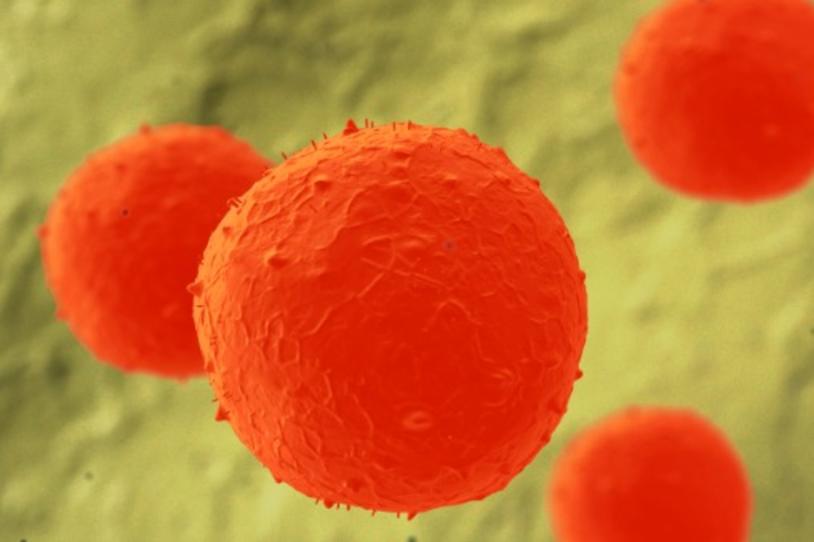
Today The Michael J. Fox Foundation (MJFF) announced funding for two projects leveraging the promise of engineered stem cells to speed new therapies and deeper understanding of Parkinson’s disease.
Advances in technology are allowing scientists to engineer dopamine neurons, which degenerate and die in Parkinson’s disease, from skin and blood cells. Researchers are attempting to use these neurons to replace what is lost in Parkinson’s and restore motor function. In addition, the cells can serve as research tools for exploration into the disease process and impact of therapeutic intervention.
“The complexity and mystery of brain diseases make them incredibly difficult to understand and to treat,” says MJFF CEO Todd Sherer, PhD. “Stem cell technologies may offer a more sophisticated dopamine replacement approach and provide the opportunity to study the influence of disease and of interventions on these vulnerable cells.”
Stem cells form a more specialized type of cell (e.g., muscle or red blood cell). Embryonic stem cells (also called pluripotent) are found in fertilized eggs and can become any type of cell. In 2007, with genetic manipulation, scientists first engineered embryonic stem cells from an adult cell found in connective tissue. The creation of these induced pluripotent stem cells (iPSCs) — essentially “man-made” stem cells that can become other cell types — has transformed medical research. iPSCs are easier to access and may be the source of a personalized therapy that the body is less likely to reject (i.e., dopamine neurons made from one’s own blood or skin cell).
Therapy Replacing Machinery, Not Only Product
Dopamine loss causes Parkinson’s motor symptoms including tremor, rigidity and slowness and may play a role in some non-motor symptoms. Replacing dopamine neurons may provide a regulated stream of dopamine that would alleviate motor symptoms.
MJFF and the National Stem Cell Foundation (NSCF) are partnering to fund Ole Isacson, MD, of McLean Hospital and the Harvard Stem Cell Institute, to further study implantation of dopamine neurons made from iPSCs in the brains of pre-clinical models.
“The restoration of the dopamine supply system would be a significant step forward in our treatment of Parkinson’s disease,” said Dr. Isacson. “This project brings us closer to realizing such a therapy, though there is still much work to be done.”
Listen to a podcast with Dr. Isacon discussing this direction of stem cell therapy.
MJFF also is funding a project led by Lorenz Studer, MD, at Memorial Sloan Kettering Cancer Center, investigating transplantation of dopamine neurons derived from embryonic stem cells drawn from existing cell lines.
While our funding is testament to our belief in this therapeutic route, MJFF also believes that stem cell therapies should be proven effective before making it to market. The Foundation signed a coalition letter opposing legislation that would give conditional approval to stem cell therapies that have proven safety but not yet efficacy. Read the letter opposing the REGROW Act.
Tools Lay Groundwork for Insight into Disease Process and Therapeutic Impact
In addition to breeding a direct therapy, iPSCs are used to develop and test other treatments. Dopamine neurons engineered from iPSCs provide an unparalleled model to mimic the Parkinson’s disease process in laboratory experiments. Scientists can use this resource to, for example, investigate the impact of causal factors such as genetic mutations and environmental exposures and the pathogenic role of cellular processes including mitochondrial dysfunction and oxidative stress. Furthermore, researchers can introduce drug compounds and assess the impact on maintenance or restoration of dopamine function.
To further these investigations, the MJFF-sponsored Parkinson’s Progression Markers Initiative (PPMI) is making iPSCs available at no cost to the researcher community. PPMI is following a diverse population of people with Parkinson’s, with risk factors of the disease and control volunteers for more than five years across 33 clinical sites. Robust clinical, imaging and biological data from PPMI (also available to all qualified researchers) increases the value of the study’s iPSCs.
“PPMI builds the infrastructure off which the greater research community can drive discovery, validation and replication,” said Mark Frasier, PhD, MJFF Senior Vice President of Research Programs. “The ‘disease in a dish’ model provided by iPSCs is an asset in the development and testing of new treatments, and streamlined access to these well characterized tools will speed progress.”
The Golub Capital iPSC PPMI Sub-study has two phases. The first — a partnership with the New York Stem Cell Foundation (NYSCF) Research Institute funded by Lawrence E. Golub and Karen L. Finerman, a member of the MJFF Board of Directors — created iPSC lines and fibroblasts from skin samples of 20 people with Parkinson’s disease and five control volunteers. This extensive collection of Parkinson’s and control participant iPSCs with complementary clinical information is now available to interested researchers at http://www.ppmi-info.org/cell-lines/.
The second phase — funded by nationally recognized credit asset management firm Golub Capital, led by Lawrence and David Golub, also a member of the MJFF Board of Directors — contracts Cellular Dynamics International to make available iPSCs derived from blood samples from 85 PPMI participants. This cohort includes volunteers recently diagnosed with Parkinson’s, those with genetic mutations associated with the disease, people with a clinical risk factor of hyposmia or REM sleep behavior disorder, and control volunteers. This diverse population and number of samples will increase the scope and scale of investigation with these resources, and those iPSCs will be available later this year.
